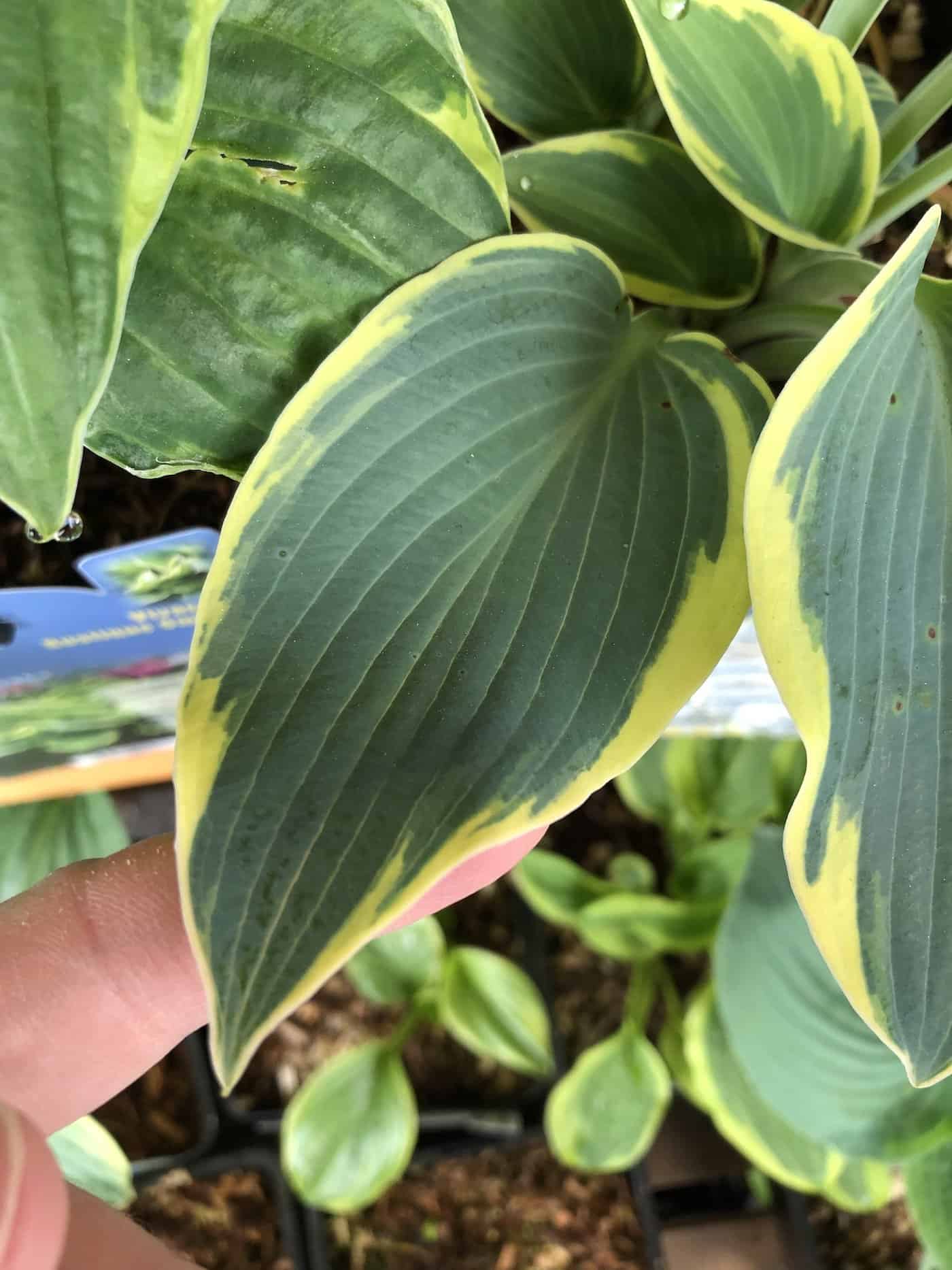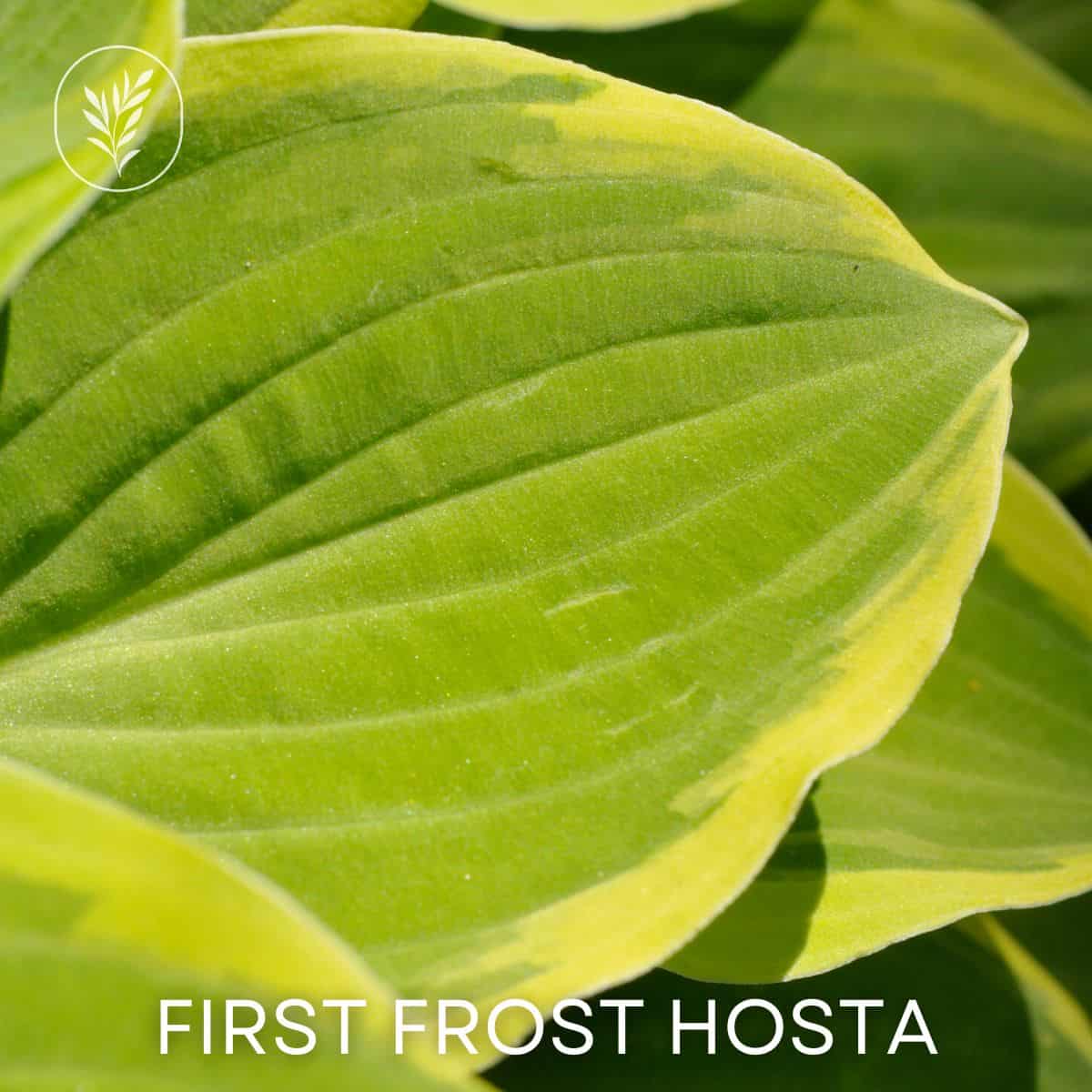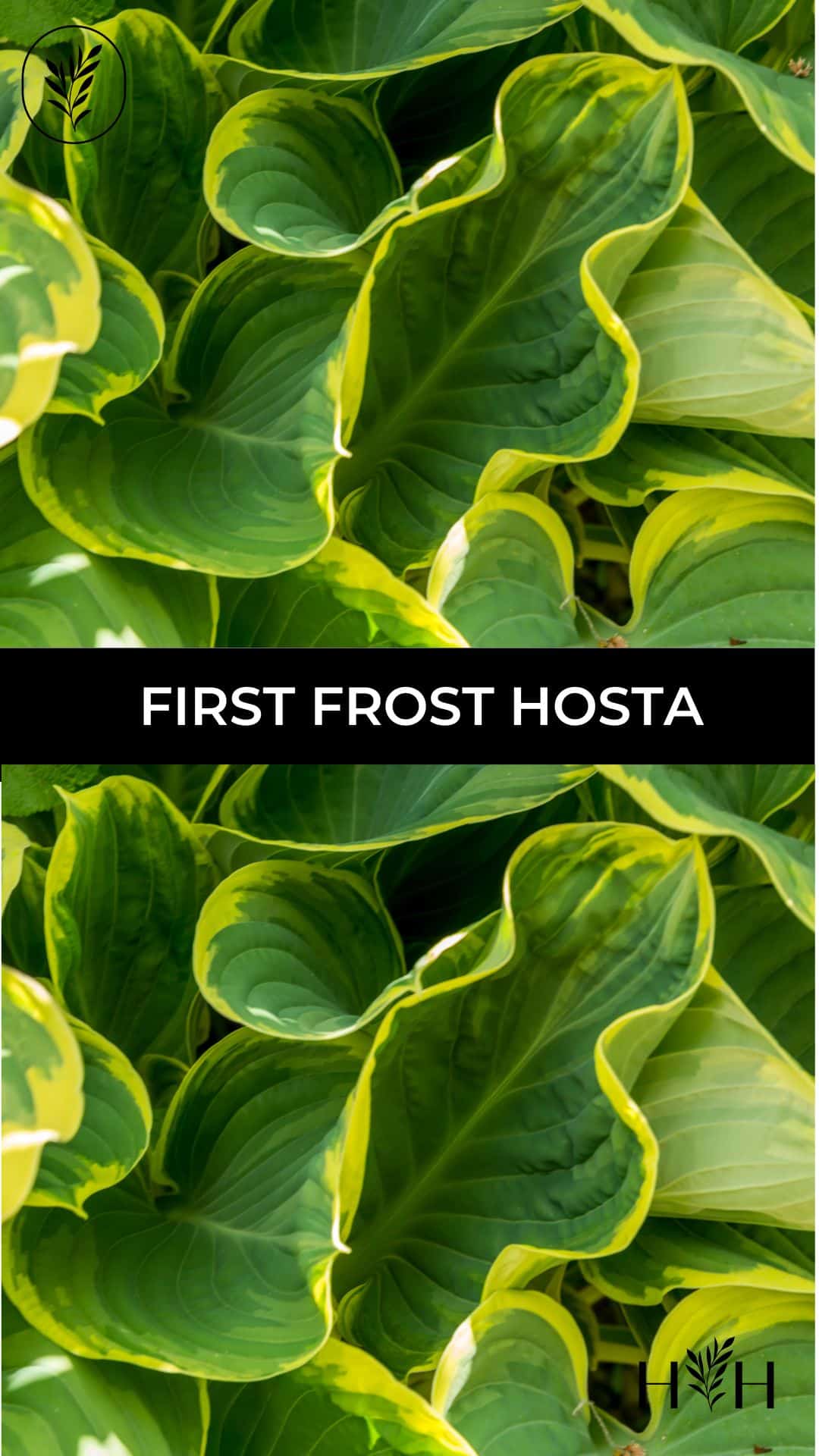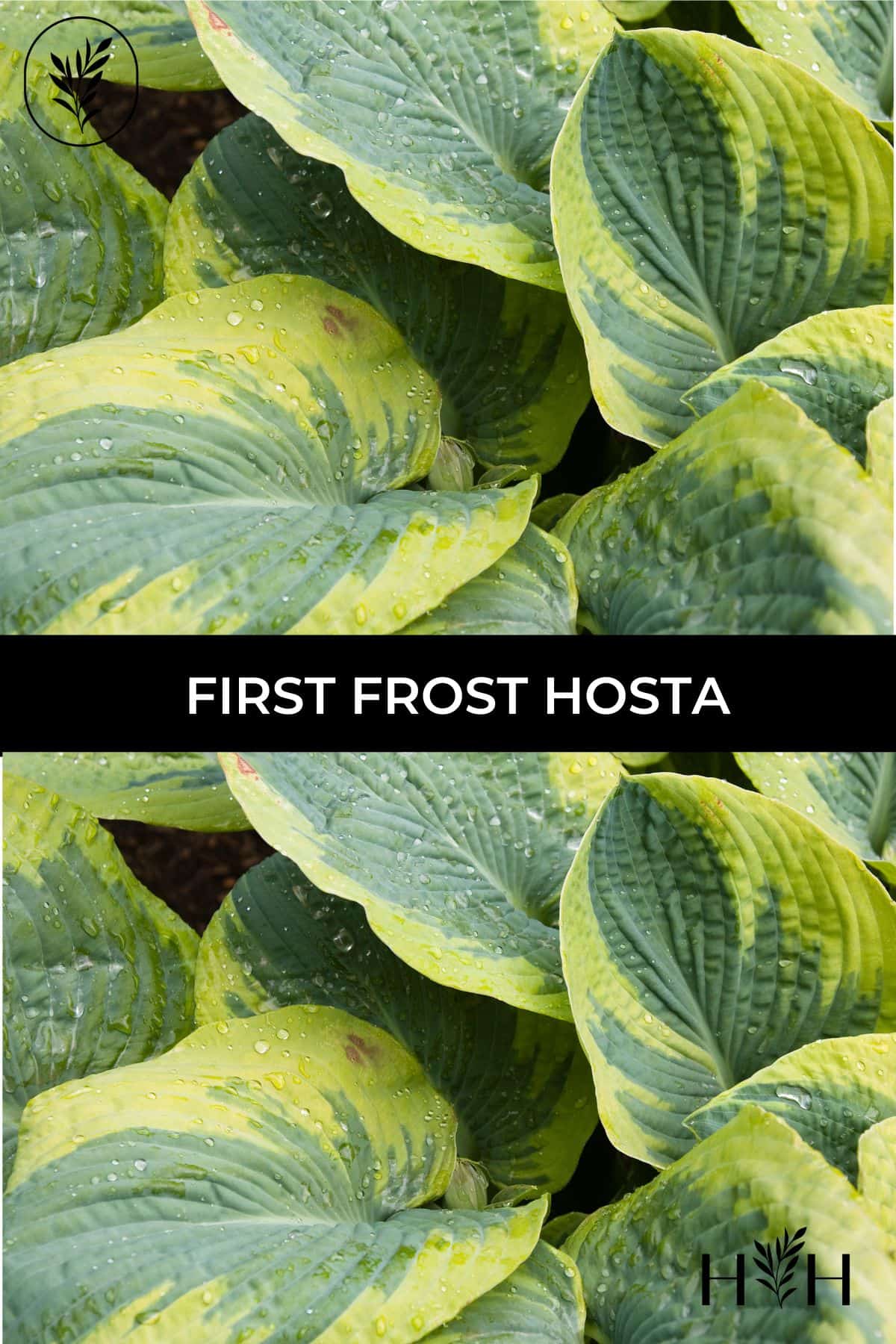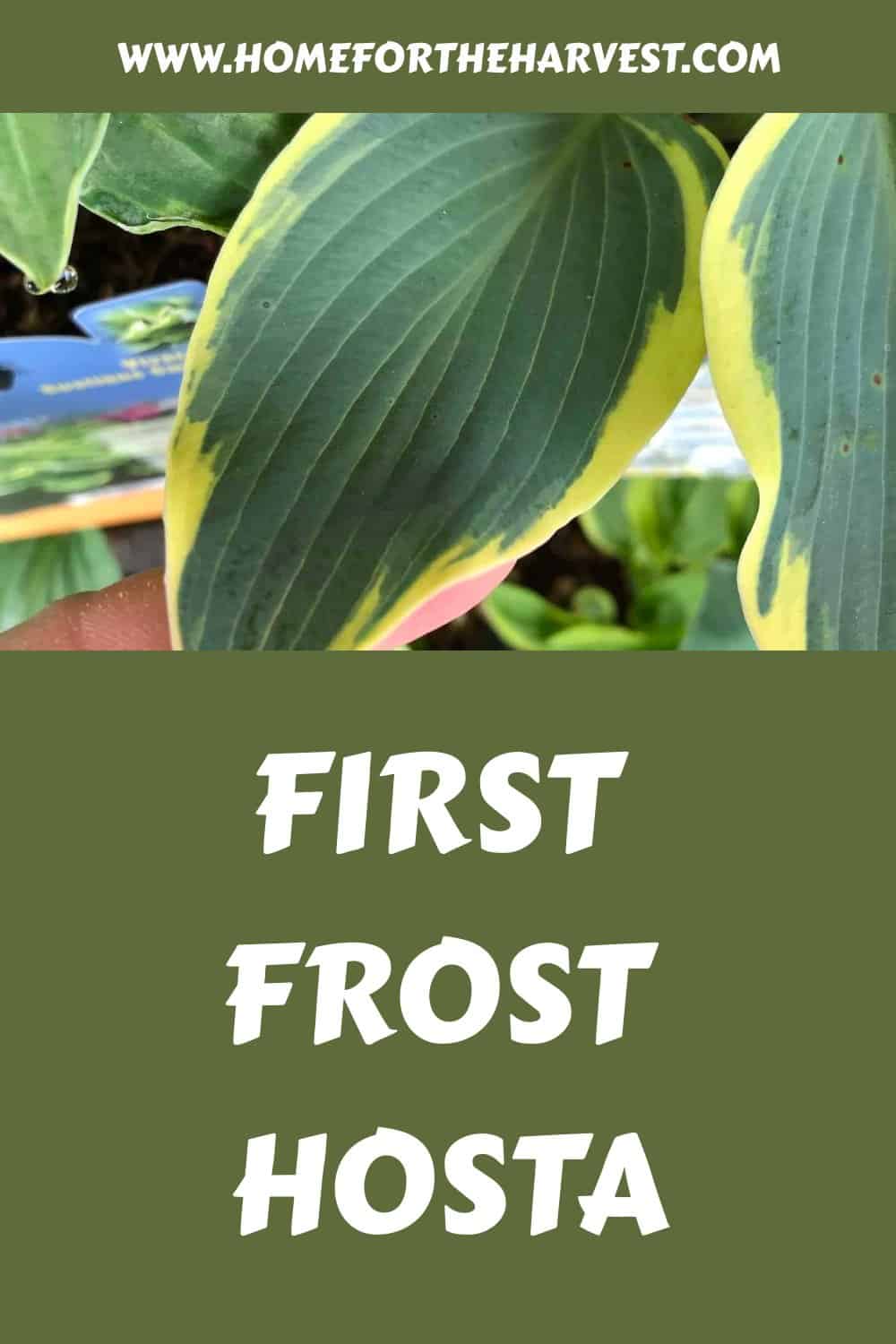The First Frost hosta is an award-winning medium-sized variegated hosta variety with green-blue leaves and yellow leaf edges. The plants grow about 3 feet wide and 18″ tall, with lovely soft lilac flowers on 22″ tall stalks. This variety is particularly cold-hardy, lasting until the “first frost” in zones 3-9. First Frost hostas grow best in partial shade when planted in well-drained soil rich in organic matter.
First Frost hosta basics
The First Frost hosta is a popular hosta variety with bicolor blue/green and yellow leaves. This plant is easy to grow and is perfect for adding color and interest to shady areas of the garden. First Frost grows best in partial shade and well-drained soil. This plant is cold-hardy and can tolerate some sun, but too much sun will scorch the leaves.
First Frost is a sport of the Halcyon hosta. Hosta ‘First Frost’ was developed as a tissue culture of halcyon by Scolnik & Solberg (North Carolina) and introduced in 2002. It was named the American Hosta Growers Association Hosta of the Year in 2010.
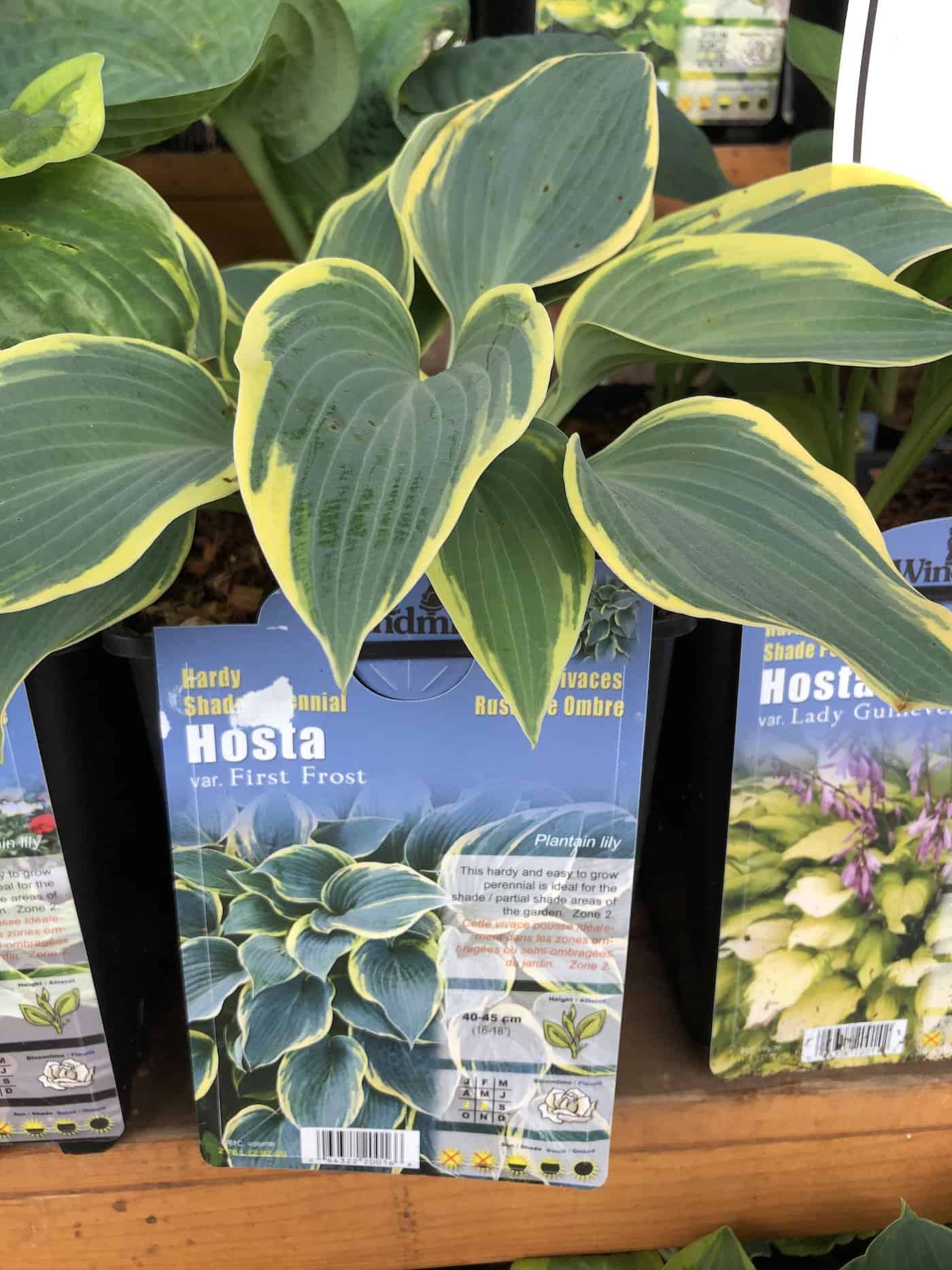
How to plant a First Frost hosta
First Frost hosta is best planted in a partial shade zone. Some direct sunlight in the morning can help bring out the contrasting colors of the leaves but avoid harsh afternoon sunlight.
In terms of soil, these plants thrive in sandy loam. The soil for these hostas should be well-drained, although they are tolerant of heavy clay (especially if planted up on a raised mound and out of threats of ponded water). Hostas grow best in slightly acidic soil.
Spring is the best time of year to plant a hosta. They can also be transplanted in spring or summer. Early fall planting can work quite well if the roots are in the ground for a minimum of about 4-6 weeks before frost.
Watering requirements for First Frost hosta
First Frost hostas should be watered regularly but not excessively. They should be watered deeply, and then the soil should be allowed to dry out a bit before being watered again. These plants tolerate drought but will perform best with consistent moisture for the first couple of years as the roots become established.
The best way to water this plant is to water the soil below the plant rather than water overhead. This helps to prevent fungal diseases and keeps the leaves dry, which will also help to keep the matte finish in the summertime.
Mulching tips
Mulching around hostas can help retain soil moisture and keep the roots cool. A layer of mulch 2″-3″ deep is ideal.
Organic materials such as shredded leaves, pine needles, or wood chips make excellent mulches for these plants. Be sure to pull the mulch back from the base of the plant to avoid crown rot.
Fertilizing requirements
First Frost hostas do not need a lot of fertilizer, but they will benefit from being fertilized once or twice a year with a balanced fertilizer. Slow-release fertilizer can be applied in the spring and again in the summer. Avoid fertilizing this plant in the fall and allow it to go into winter dormancy.
Pruning First Frost hosta
First Frost hostas require minimal pruning. During the growing season, remove any yellow or dead leaves from the plant and compost them. The whole plant can be cut back to the ground after a hard frost kills the leaves. This will help to prevent the spread of diseases and overwintering pests.
Plant care tips
First Frost hostas are quite low-maintenance in the garden. Keep the plants well-watered for the first few years to ensure the plant gets a good start. Keeping the area free from weeds and nicely mulched also makes sense. Fertilizing once or twice a year with a balanced fertilizer will help to keep the plant looking its best. Other than that, these plants are quite carefree and easy to grow!
Companion plants for First Frost hostas
There are quite a few good companion plants for First Frost hostas. They can be paired with larger hosta varieties and with other shade-tolerant plants. Some great matches for first frost hosta include astilbe, bleeding heart, fern, lamium, and pachysandra.
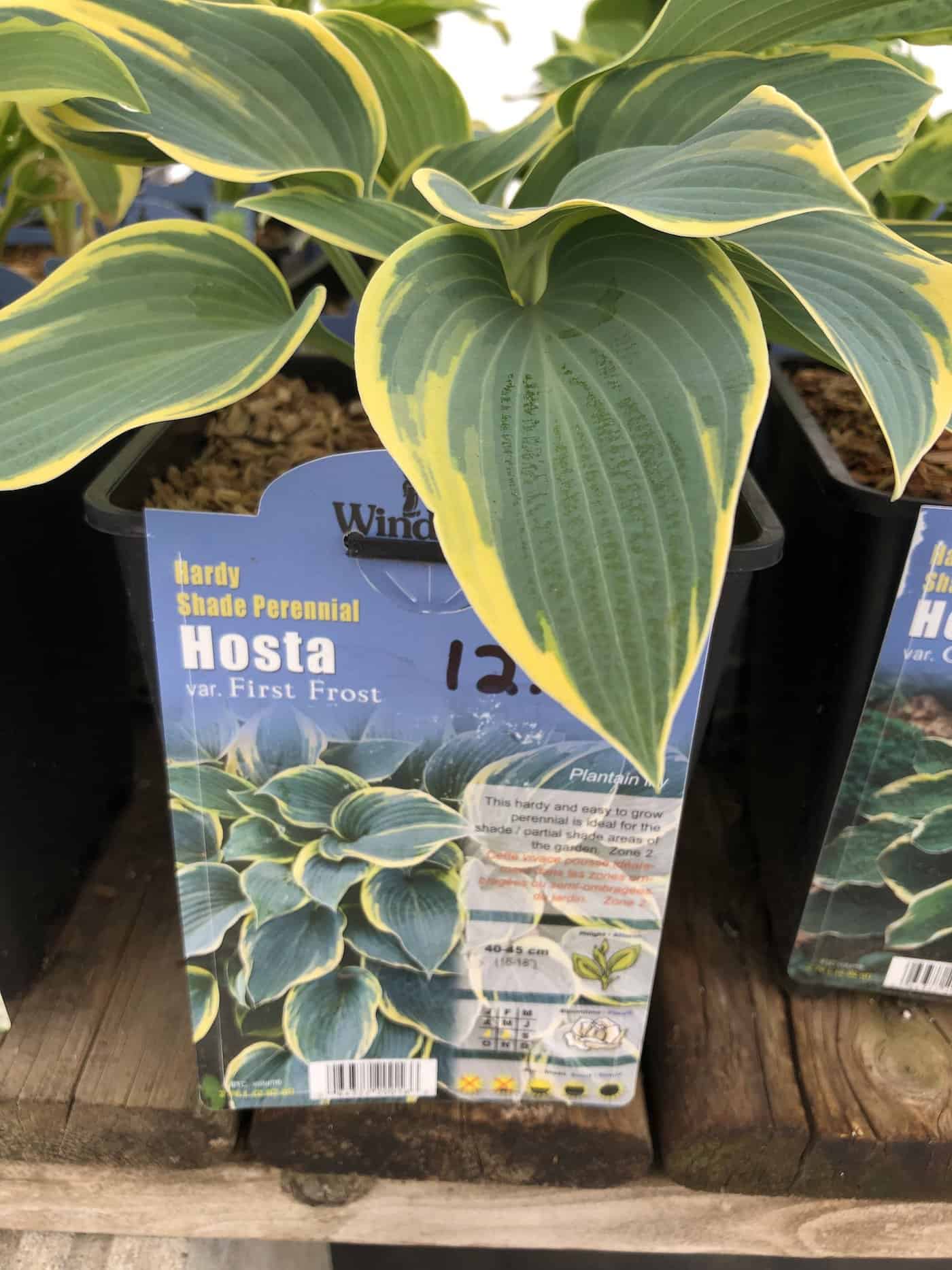
Pests affecting hostas
Hostas are relatively disease- and pest-resistant but can be susceptible to slugs, snails, and Japanese beetles. The best way to avoid these problems is to plant them in well-drained soil and water them at the base of the plant to avoid lingering moist conditions.
If pests become a problem, there are several organic methods of control that can be used. Slugs can be counteracted by placing a board near the plant and lifting it in the morning to find and remove the pests. You can also use beer traps. Snails can be controlled by hand-picking them off of the plant or using bait like beer traps. Japanese beetles can be controlled with traps or by hand-picking them off of the plant and dropping them into soapy water.
Diseases affecting hostas
Hostas are relatively disease-resistant, but they can be susceptible to fungal diseases such as powdery mildew, leaf spot, and crown rot. The best way to avoid these problems is to plant them in areas with good air circulation and well-drained soil.
If diseases become a problem, there are several organic methods of control that can be used. Start by clearing out dead plant debris and improving airflow. You can also use an organic fungicide spray.


